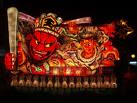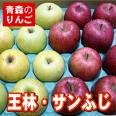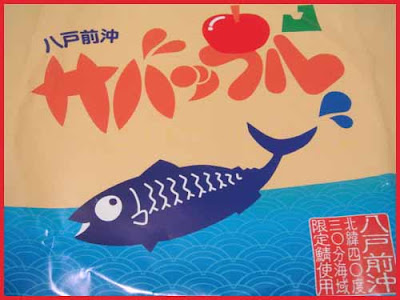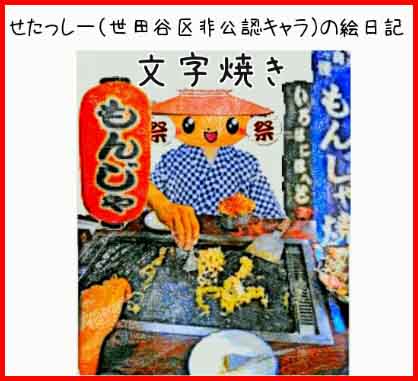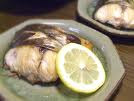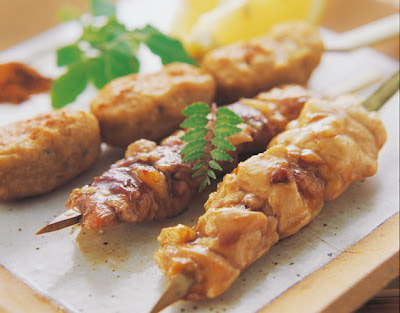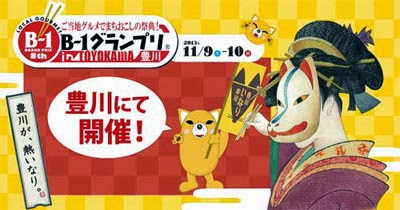::::::::::::::::::::::::::::::::::::::::::::::::::::::::::::::::::::::::::::::::::::::::::::::::::::
Gotochi Gurmet (gotoochi gurume)
gotoochi gurume ご当地グルメ
regional gourmet food
These efforts are part of the "town revival gourmet" machiokoshi gurume 町おこしグルメ.
People would travel and even make bus tours just to get some local food:
Gotochi Food, local specialities
kankoo gurume 観光グルメ, tourism gourmet.
gotoochi no zeppin ”ご当地の絶品” gotochi zeppin

quote
Throughout Japan, there are local specialties deeply rooted in the respective regions called "Gotochi Food". Many people visit such regions to enjoy delicious dishes featuring local ingredients.
In many cases, the same kind of food may differ in taste and how it is eaten. A good example of such is Ramen. Depending on the region, the thickness and shape of the noodles as well as the color and flavor of the broth may be completely different.
Seasonings such as soy sauce and sauce do not taste the same everywhere you do because of the different preferences of flavor according to respective parts of the country. Moreover, some of the regions have their own unique seasonings.
Cattle, pigs, and chickens raised with utmost care are sold as expensive locally-bred brand meat.
There also are Sake that can only be savored in the respective regions and fruits that can be found no where else but in that certain area.
Meanwhile, some of the local specialties have rapidly become so popular ever since they were first introduced in the past dozen years or so that their names are recognized by the majority of the Japanese.
By tasting different local specialties, you will certainly be surprised at how many varieties there are. It would be a great idea to enjoy all the tastes each region has to offer.
source : www.japan-i.jp
WASHOKU
Regional Japanese Dishes
:::::::::::::::::::::::::::::::::::::::::::::::::::::::::::::::::::::::::::::::::::::::::::::::::::::
Akkeshi gurume paaku 厚岸グルメパーク Gourmet Park Akkeshi
Hokkaido, in the south west of Hokkaido
. . . CLICK here for Photos !
:::::::::::::::::::::::::::::::::::::::::::::::::::::::::::::::::::::::::::::::::::::::::::::::::::::
Fujinomiya is gearing up with
yakisoba, even with a special song about it, yakisoba ondo 焼き蕎麦おんど (音頭)
More than 37 big and small shops care for the visitors from many places. This has helped the town to get more visitors and more life into its shopping streets.
. . . CLICK here for Photos !
The characteristics of the noodles of "Fujinomiya Yakisoba"
http://www.umya-yakisoba.com/echaryki.htm
shigureyaki, shigure yaki しぐれやき, しぐれ焼 a kind of okonomiyaki with yakisoba,
with a fried egg on top to symbolize snow on Mount Fuji
. . . CLICK here for Photos !
shigure means "cold autumn rain, sleet".
:::::::::::::::::::::::::::::::::::::::::::::::::::::::::::::::::::::::::::::::::::::::::::::::::::::
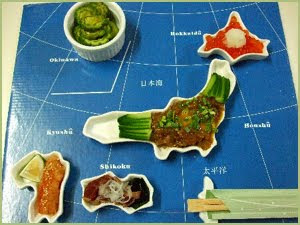
Map of Japan with regional dishes
gotoochi otsumami setto ご当地おつまみセット
sets of local specialities, mostly sold on the internet these days.
. . . CLICK here for Photos !
:::::::::::::::::::::::::::::::::::::::::::::::::::::::::::::::::::::::::::::::::::::::::::::::::::::

Nagasaki has a Sasebo Burger. 佐世保バーガー
Sasebo baagaa
. . . CLICK here for Photos !
Nagoya no tebasaki age 名古屋 手羽先揚げ
deep-fried chicken wings from Nagoya
This was invented after the war, when a cook forgot to order whole chicken for his "Tarzan Fried Chicken". All that was left were the wings, which at that time were only used for making soup stock. He used the lot of wings, prepared it like his deep-fried chicken kara-age, with a special sauce, pepper, salt and sesame seed sprinkeld on top ... and started a hit in his small shop. He is now 80 years (in 2010) and the small restaurant still a favorite spot of many.
. . . CLICK here for Photos !
Niimi Town, Okayama 新見市岡山県
inoshishi raamen いのししラーメン with wild boar meat
This soup is also served in North Kyoto 京北町.
. . . CLICK here for Photos !
:::::::::::::::::::::::::::::::::::::::::::::::::::::::::::::::::::::::::::::::::::::::::::::::::::
Shizuoka Maguro Burger
Sakai Minato Maguro Burger (Tottori)
maguro baagaa まぐろバーガー tuna burger
. . . CLICK here for Photos !
:::::::::::::::::::::::::::::::::::::::::::::::::::::::::::::::::::::::::::::::::::::::::::::::::::::
B-kyuu gurume ... Second Class Gourmet
B級グルメ bii kyuu gurume

. . . CLICK here for more Photos !
おかやまB級グルメフェスタin津山
B Kyu Gurume .. Festa in Tsuyama, March 20/21, 2010
Okayama prefecture

My Details are here:
. WASHOKU
Grade B Gourmet Meeting in Tsuyama
. Hiruzen Yakisoba 蒜山焼そば / ひるぜん焼そば
fried noodles from Hiruzen Highlands
quote
The B-class-food boom reveals true Japanese cuisine
By PHILIP BRASOR
Two weeks ago, an advisory panel to the Ministry of Agriculture, Forestry and Fisheries recommended it apply to the United Nations Educational, Scientific and Cultural Organization for recognition of Japanese cuisine kaiseki ryōri, as an intangible cultural asset.
snip
The panel might be better off taking a hint from the B-kyū (B-class) Gourmet movement, whose annual orgy of down-home gastronomy, the B1 Gold Grand Prix, was held last weekend in Himeji, Hyogo Prefecture. A record half-million people attended the festival to sample original concoctions from 63 localities and select the dish they liked best, which this year was Hiruzen yakisoba, stir-fry noodles with chicken and cabbage from the town of Miniwa in Okayama Prefecture. The winner won a golden trophy in the shape of a pair of chopsticks.
But what Maniwa mainly won is the kind of media exposure that amounts to billions of yen if translated into advertising terms. The Grand Prix was not only covered by all the major news shows, including NHK's, but many of the dishes that placed in the Top 10 were highlighted in depth; meaning film crews were dispatched to the places where these dishes originated in order to produce tokushū (special reports) about the food and the people who make it.

What's that worth? Fujinomiya, the town in Shizuoka Prefecture that has won the Grand Prix twice for its own style of yakisoba, claims that the dish has enriched the local economy to the tune of ¥44 billion since 2001. In the three months after Atsugi in Kanagawa Prefecture won the 2008 GP, the town reaped ¥3 billion from people who came to eat its prize-winning Shirokoro horumon (stewed guts). Kofu, the capital of Yamanashi Prefecture, saw the number of its visitors increase fourfold in the year since the city won the GP in 2010.
The B-kyū movement has been ascendant for years — the Grand Prix was launched in 2006 — and is being hailed as one of the few successful schemes for revitalizing rural and ex-urban areas, though "scheme" may not be the right word. B-kyū sprung up organically, without help from a coordinating entity. The various related trademarks are held by the committee that puts on the Grand Prix, but this organ simply filled a centralized public relations need that had grown large by the mid-2000s as more and more local governments endeavored to take advantage of the general public's interest in regional home cooking.
To anyone who watches Japanese TV at all, the B-kyū boom is hardly surprising. So many variety shows incorporate the preparation and eating of food that the Western genre known as "cooking shows" has no meaning here. More significantly, travel shows are often centered on seeking out exceptional dishes, and while regional cuisines have been around as long as there have been regions, Japanese TV has standardized the promotion of local foods with a production style built around the money shot of a celebrity taking that first mouthful, pondering its quality and then erupting in ecstatic praise over the amazing flavor.
Everybody knows the drill, which is why nobody is impressed any more. After decades of watching the same reaction repeated over and over, viewers invariably become jaded. They know travel shows are inexpensive to produce because small businesses offer free food and accommodations in exchange for exposure, and so the on-air talent has no choice but to effuse over everything they put in their mouths. It's not that the public doesn't believe the food is delicious; only that the producers' priorities have little to do with honesty.
B-kyū could partly be seen as backlash: viewers telling the media what's good rather than the other way around. The very name, "B-kyū," rejects the notion that people want something approved by someone whose authority on the matter is arbitrary and, by implication, snobbish. It's a movement that belongs to everyone. Now there are a number of programs that explore regional peculiarities on the locals' terms, most notably Nihon TV's "Kenmin Show." But they followed the trend, they didn't spark it.
It's this anti-elitism that people find gratifying and which may disqualify B-kyū for UNESCO's imprimatur for the same reason kaiseki would have been rejected. By definition, regional cooking, especially that which was designed to be cheap and resourceful (many B-kyū dishes started out as something to sell at local festivals), can only be representative of a small group. But that's what makes Japanese food great, if not exactly unique. Ingredients and cooking methods vary widely, but are less important than the enthusiasm of the consumer. As Japanese people are always quick to tell you, they'll eat anything as long as it tastes good.
source : Japan Times, November 2011
::::::::::::::::::::::::::::::::::::::::::::::::::::::::::::::::::::::::::::::::::::::::::::::::::::
Digging in: the rise of B-kyū gurume
Everyman Eats is a new column about the phenomenon of B-kyuū gurume (B-grade gourmet) — inexpensive, down-home cooking that reflects local culinary traditions. This first installment considers 10 moments that helped shape the recent B-kyū boom.
Ramen hits the big screen (1985)
Director Juzo Itami's award-winning comedy "Tampopo" premiered during a national craze for Ogikubo Ramen ...
Noodle Mecca Kanagawa (1994)
When the Shinyokohama Ramen Museum opened in 1994, ...
Tokyo's Gyoza Stadium (2002) and Yokohama's Cup Noodles Museum (2011).
Takeru Kobayashi conquers (2001)
the 2001 Nathan's Annual Hot Dog Eating Contest
Ladies welcome at Kohmen (2002)
in a yakiniku (barbecue) restaurant ...
Kimukatsu slices the field (2003)
the cutlets at Kanto-based tonkatsu chain Kimukatsu. ...
B-1 Grand Prix pulls a crowd (2006)
B-kyū gurume's rise from local fad to national obsession
from Hokkaido fried noodles to Okayama tripe udon —
Ishi-chan makes it B-I-G (2007)

Every populist movement needs a mascot, and B-kyū gurume found its own in plus-size comedian Hidehiko Ishizuka. Clad in bovine-print overalls and armed with a bulletproof gullet, the portly "gourmet reporter" has made a career of touring down-home restaurants on such shows as TV Tokyo's "Ganso! Debuya" ("Original! Big Eaters"). His euphoric cry of pleasure — "Maiu!" — has become a national catchphrase.
("Maiu!" - U MAI it tasts sooo good!)
Ippudo takes Manhattan (2008)
in New York's trendy East Village. ...
Noodles gets co-opted (2010)
Udon restaurant Mendokoro Nakajima, which opened in 2010 in the Hotel New Otani Tokyo,
B-kyū gurume goes mobile (2012)
Bookstores ... guides to B-kyū gurume, ...
Gotochi B-kyū Gurume Keitei app ...
source : Japan Times, June 29, 2012
. SnapDish app for food photos .
*****************************
Worldwide use
*****************************
Things found on the way
jisan jishoo 自産自消 self-produced, self-consumed

Locally produced food and fish is prepared, for example in school luncheons or official buildings.
Many regions are trying to install new green values in the consumers.
This is a new word, maybe since 2008.
. . . CLICK here for Photos !
:::::::::::::::::::::::::::::::::::::::::::::::::::::::::::::::::::::::::::::::::::::::::::::::::::::
http://gourmet.oricon.co.jp/special/20070515_01.html
*****************************
HAIKU
*****************************
Related words
***** WASHOKU : Regional Japanese Dishes
***** WASHOKU
bii kyuu gurume B級グルメ B-class gourmet food
*****. スローフードジャパン Slow Food Japan
:::::::::::::::::::::::::::::::::::::::::::::::::::::::::::::::::::::::::::::::::::::::::::::::::::

